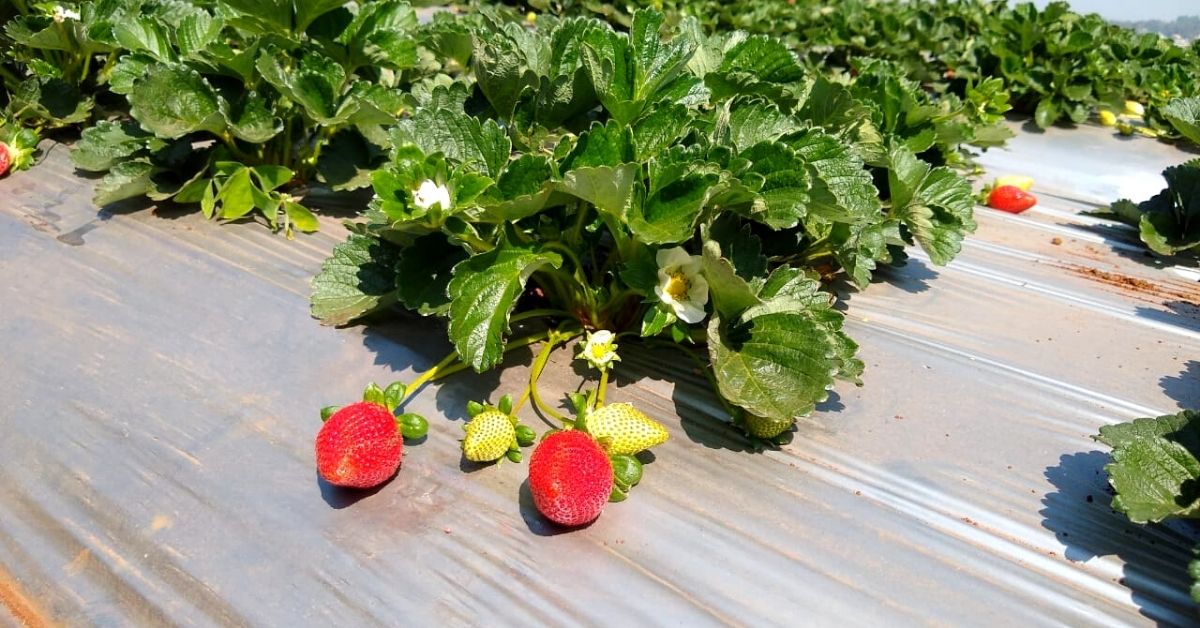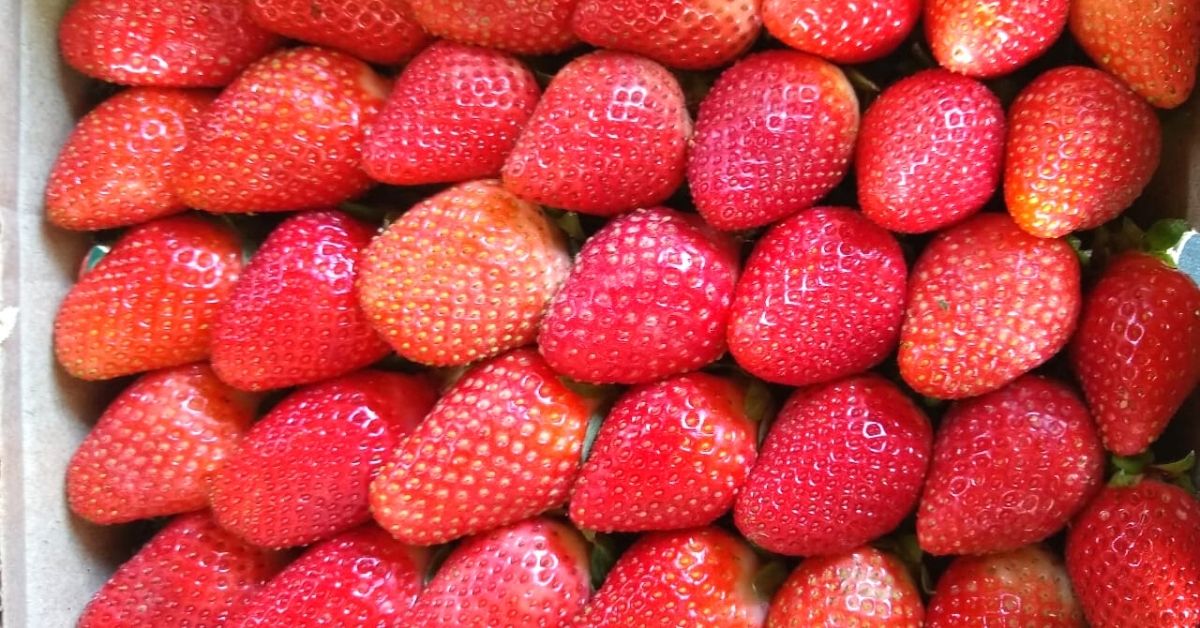For Sewaram, a farmer from Meerut in Uttar Pradesh, ensuring his four-member family’s survival, with never more than Rs 10,000 a month, was turning out to be increasingly challenging. He was a sugarcane farmer, and with limited earnings on his 1-acre land, he was struggling to make ends meet. A friend, Kuldeep, who owned a farm right next to his, was a witness to Sewaram’s plight.
One day, he offered a suggestion to Sewaram — start growing strawberries. “Kuldeep described the experience akin to going to the market with a handful of strawberries to sell, and returning with a suitcase full of money — that’s how lucrative the opportunity was. I was interested, because sugarcane was somewhat the opposite — loading up a truck with tonnes of produce, and coming back with comparatively less,” Sewaram, 38, tells The Better India.
Moreover, the returns came late. “A sugarcane farmer depends heavily on the sugar factory to buy produce. It takes months to sell the harvest and requires a long wait to receive earnings,” he says.
Ups and downs

Strawberries, on the other hand, need not be produced in tonnes, and a few hundred kilos would still fetch a better price, says Sewaram. So he decided to experiment with the fruit crop. In 2013, he sourced plants from Himachal Pradesh at Rs 2 each, and planted 1,500 on his half an acre of land.
“The returns were impressive during the first year. Unfortunately, from the second year, the plants started struggling, and did not survive by 2015. I lost all my investment and could not take up strawberry cultivation for another two years,” the farmer says.
Eventually, Sewaram learned that the saplings procured from Himachal Pradesh were not resilient enough and had failed to acclimatise with the weather conditions of Uttar Pradesh. Research and discussions with other farmers revealed that strawberry saplings from Mahabaleshwar in Maharashtra were proven to have better survival rates.
“Around 2018, I approached a nursery in Mahabaleshwar and bought the same number of saplings for Rs 12 each. The plants grew well. I spent a total of Rs 2.5 lakh on buying the plants, along with other expenses of maintaining them. When I sold the harvest at Rs 500 a kilo during peak season, it earned me Rs 1.5 lakh,” he adds.
Gamble pays off

Sewaram says the earnings doubled to about Rs 20,000 a month. “The efforts required to grow the crop were also less, and the plants survived well. I am satisfied with the income. I did not have to wait for months for the cash inflow,” he adds.
When asked if he had indeed managed to fill up his suitcase, as suggested by Kuldeep, Sewaram replies, “My suitcase did not full up, but my pockets certainly did. My wallet is a suitcase for me.”
The income from the sugarcane grown on the remaining half-acre helped him cover investment costs and provided a cushion for losses. Sewaram wants to experiment with rose farming in the coming days. “I heard that it also provides good returns and has seen an increase in demand recently,” he says.
Before signing off, he says he has some advice for farmers. “The inflation rates have skyrocketed over the past decade. The farmer is experiencing difficult days, and there is no guarantee of the minimum selling price. In such a difficult environment, it is the farmer who has to fend for himself,” Sewaram says.
He adds that farmers have no support from other sectors or stakeholders, and insists that they have to help each other survive these difficult times. “Even if there are risks involved in experiments in farming, one shouldn’t shy away. My gamble paid off,” Sewaram says.
Edited by Divya Sethu
No comments:
Post a Comment